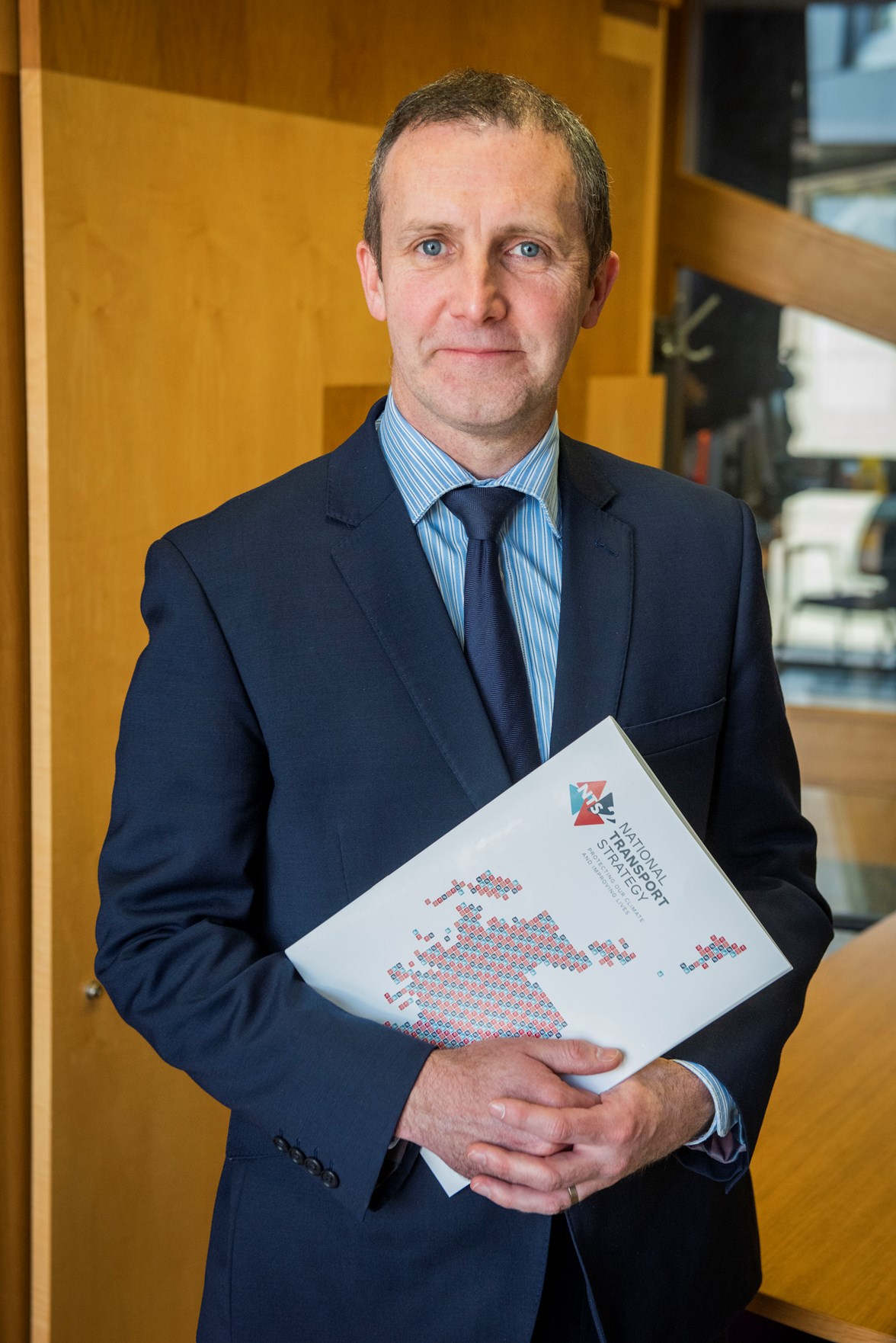Twenty year transport strategy published
A new strategy which will guide Scotland’s transport plans for the next twenty years has been laid before the Scottish Parliament.

Michael Matheson MSP
During a statement to MSPs yesterday, cabinet secretary for transport, infrastructure and connectivity, Michael Matheson, said that the National Transport Strategy sets out the role of transport in delivering the priorities of reducing inequalities and taking climate action while helping deliver inclusive economic growth and improving health and wellbeing.
More than 60 organisations and 6,500 people contributed to the development of the document, with a consultation last year receiving 1,200 responses.
The Strategy sets out the actions that have to be taken to meet The Scottish Government’s ambitious climate change targets. It acknowledges that there needs to be a range of activity, including technological change to ultra-low emission vehicles, altering people’s travel behaviour through improved use of public and active travel modes, as well as a reduction in the demand for unsustainable transport.
Michael Matheson MSP said: “The National Transport Strategy is for the whole of Scotland recognising the different needs of our cities, towns, remote and rural areas and islands.
“Our shared vision is for a sustainable, inclusive, safe and accessible transport system, helping to deliver a healthier, fairer and more prosperous Scotland for communities, businesses and visitors. One where people choose walking and cycling or public transport over other modes and where our businesses make sustainable choices to support the reliable delivery of goods and services.
“Transport plays an important role in delivering the society we want and inclusiveness and equality are at the heart of our new Strategy. While we tackle inequalities, our actions will reduce poverty, in particular child poverty, by improving access to jobs, education and training as well as to key services.
“We are already putting the building blocks in place, bringing forward transformational long term funding for bus infrastructure of over half a billion pounds, helping reduce journey times and improve reliability. We have committed to decarbonising our railways by 2035 and we are maintaining record investment in active travel.
“The journey doesn’t stop there and we will go on to consider the infrastructure or policy interventions that will help support our vision through the updated Climate Change plan and the second Strategic Transport Project Review. A delivery plan will be published this Summer and I look forward to working with our partners to deliver the far reaching priorities and outcomes of the Strategy.”
Deputy chief executive officer of Sustrans, John Lauder, added: “Scotland’s new National Transport Strategy is a recognition of how much the way we travel matters to people, our places and the planet.
“The strategy is one of the signs that climate change and reducing carbon emissions has to be central to Scotland’s future. But it also shows that we can do this in a way that improves the health of all the people of Scotland at the same time.
“Prioritising healthy travel and reducing carbon emissions demands that we make it easier for people to choose to walk and cycle for more of their everyday journeys.
“Helping more people to walk and cycle gets people more physically active, helps to reduce air pollution and can cut our carbon emissions.
“There is no doubt that there are significant challenges and tough choices ahead. Sustrans Scotland, with support from partners, is already delivering projects that make it easier for people to walk and cycle. We are ready to help deliver this vision for a transport system that puts people, place and planet first.”





















